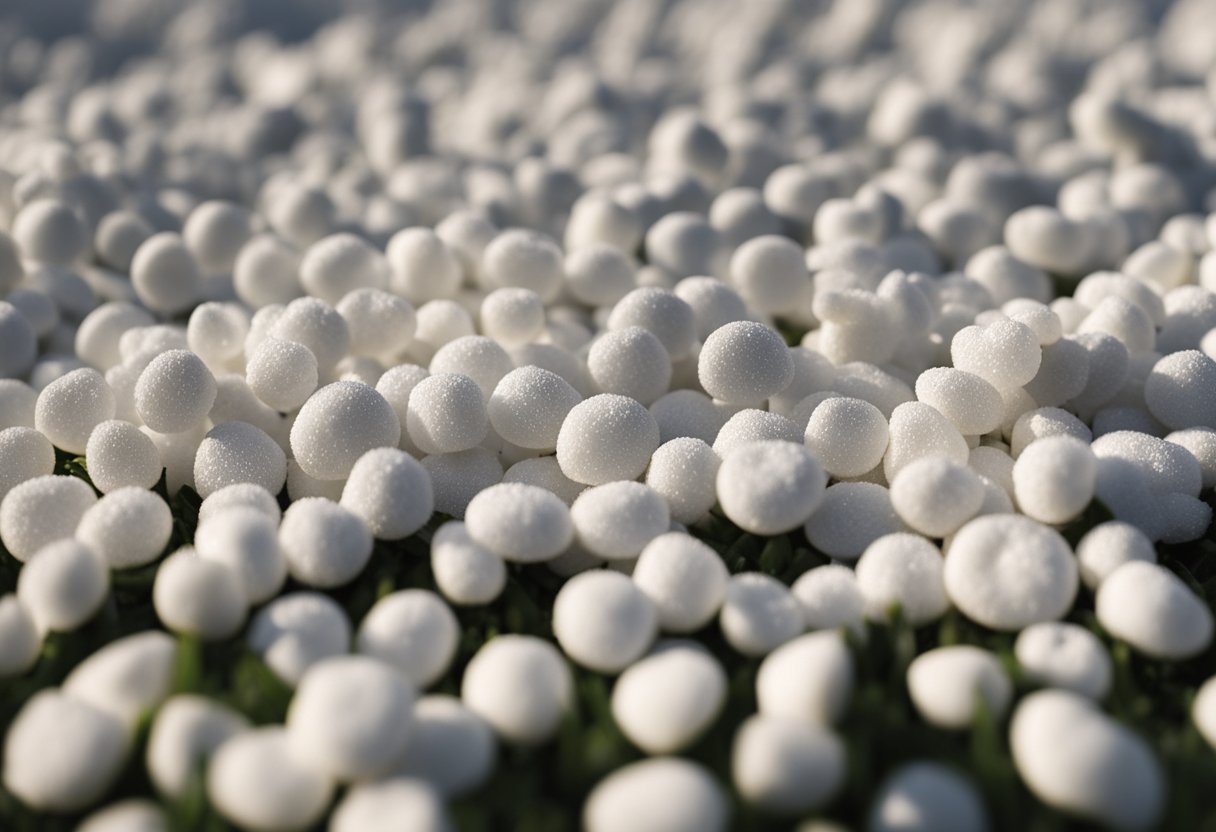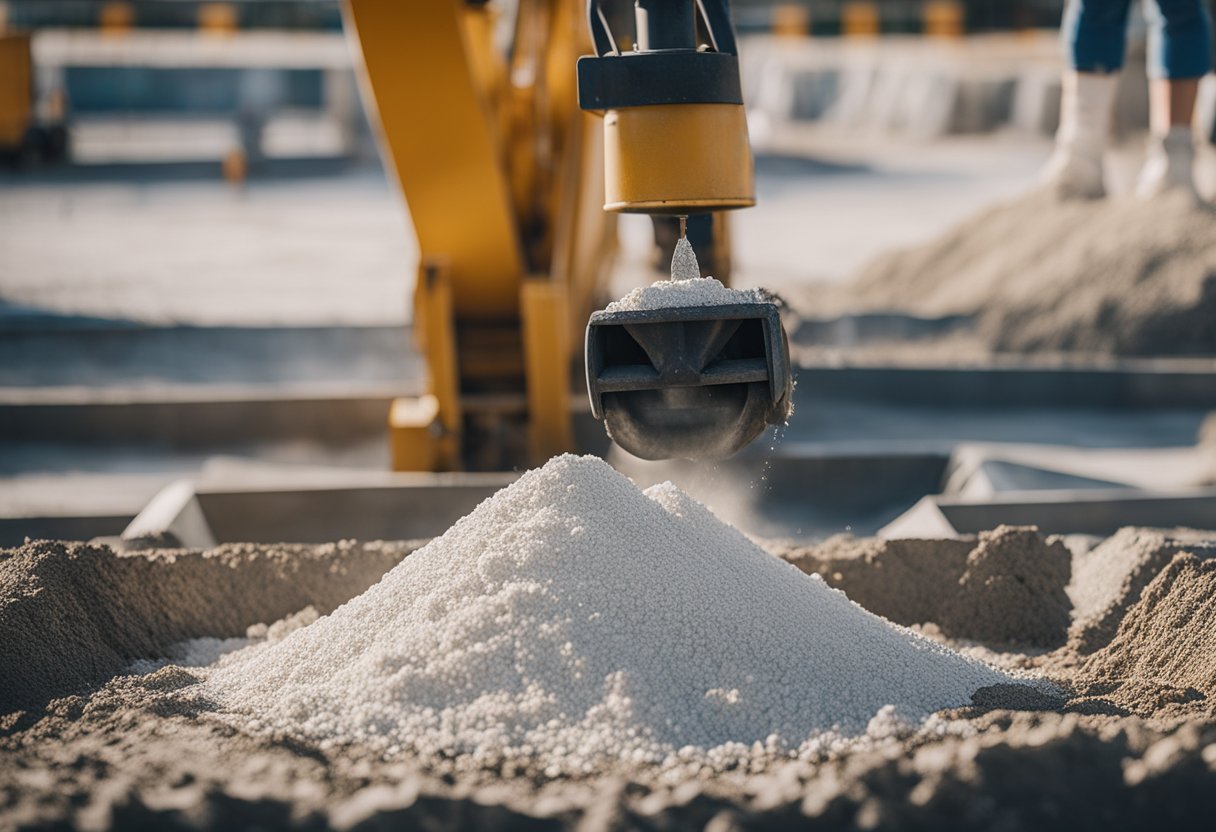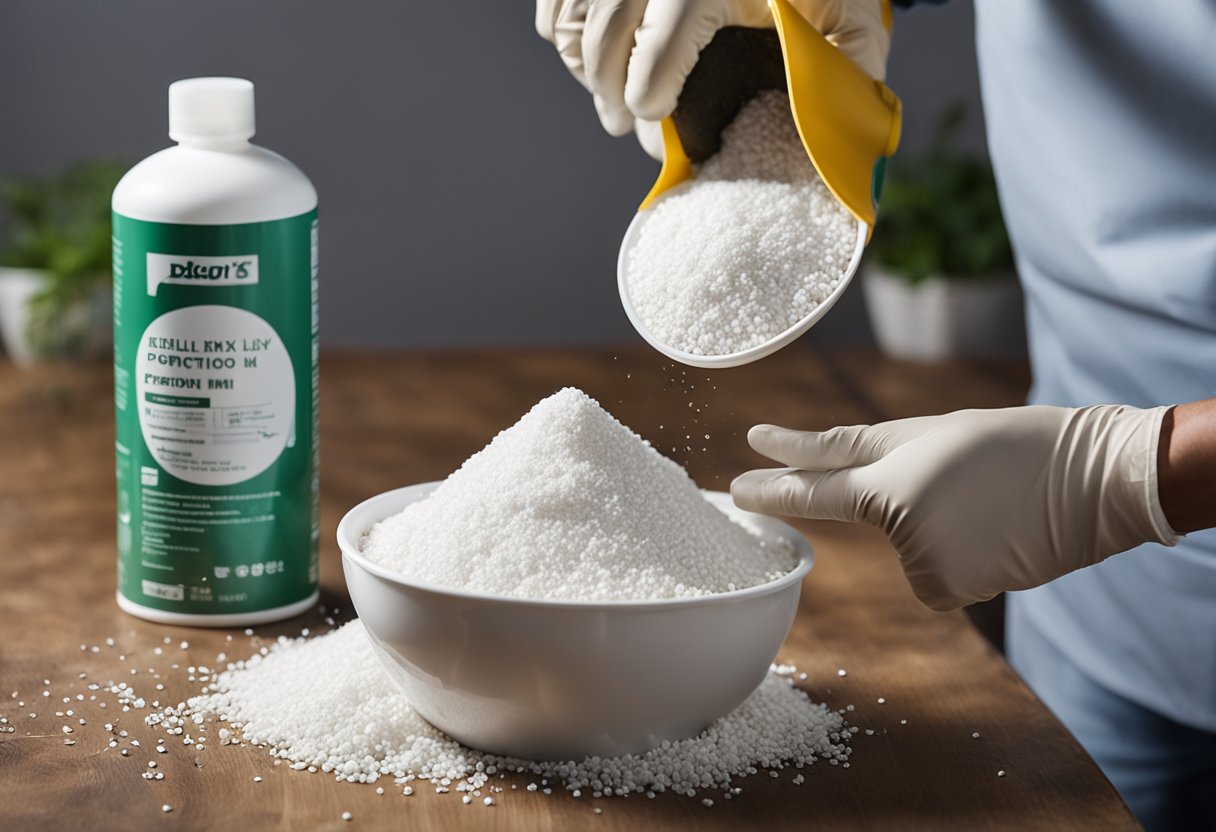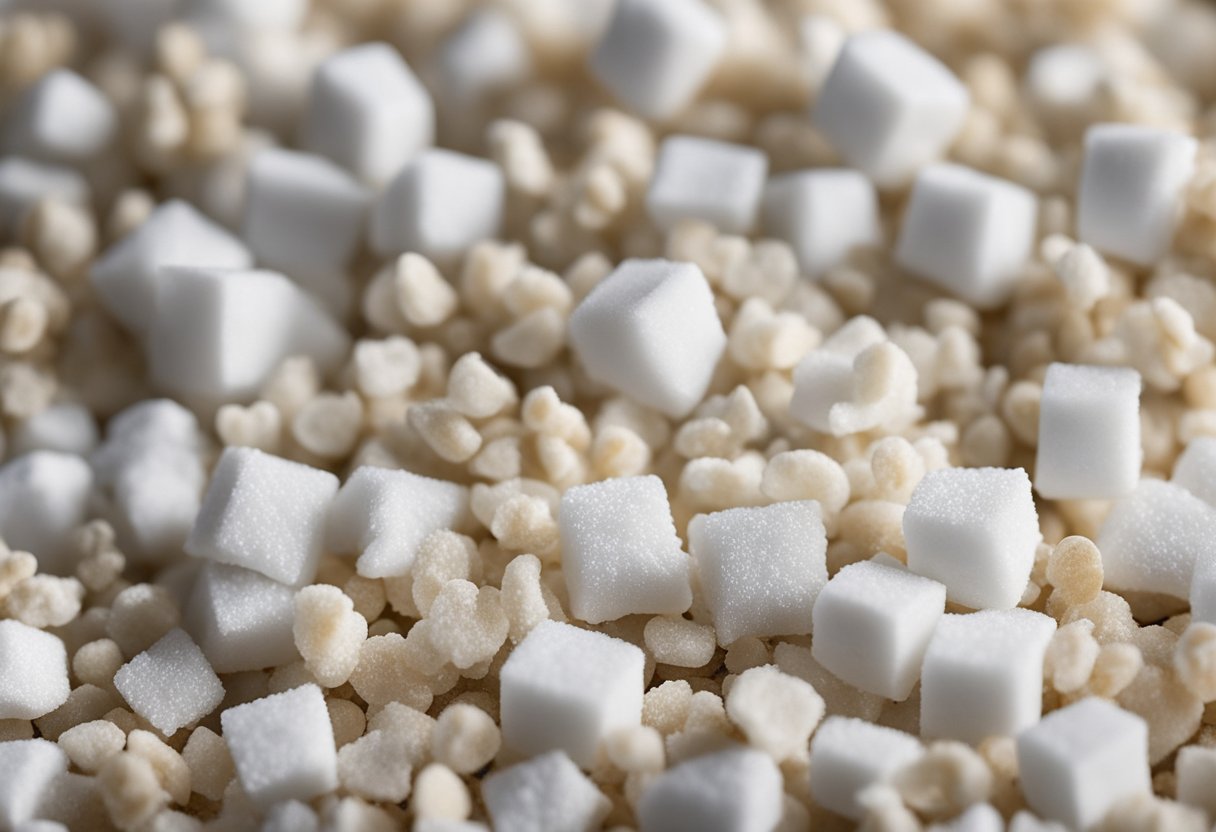What Is Perlite Used For? A Comprehensive Guide
Perlite is a naturally occurring volcanic glass that has been used for decades in a variety of applications. It is a popular horticultural growing medium due to its ability to retain moisture and provide adequate drainage. Perlite is also used in construction as a lightweight aggregate and as insulation due to its low thermal conductivity.

In horticulture, perlite is commonly mixed with soil to improve its structure and drainage. It is also used as a standalone growing medium for plants such as succulents and cacti that require excellent drainage. Perlite’s ability to retain moisture while also allowing excess water to drain away makes it an ideal growing medium for plants.
In construction, perlite is used as a lightweight aggregate in concrete, plaster, and other building materials. It helps to reduce the weight of these materials while also improving their insulating properties. Perlite is also used as loose-fill insulation in walls, attics, and roofs due to its low thermal conductivity and fire-resistant properties.
Perlite Fundamentals
Origins and Nature
Perlite is an industrial mineral that is formed from volcanic glass or volcanic rock, such as obsidian. It is an amorphous volcanic glass that is lightweight, porous, sterile, and has a neutral pH. Perlite has a low density and is composed mainly of silicon dioxide, with smaller amounts of sodium oxide, potassium oxide, iron oxide, magnesium oxide, calcium oxide, and aluminum oxide.
Physical Properties
Perlite is a unique volcanic glass that expands when heated rapidly to form a lightweight, porous material. The expansion occurs because of the presence of water in the crude perlite rock, which vaporizes and creates tiny bubbles in the material. The expansion process increases the volume of the crude perlite by 10 to 20 times, resulting in a product that is lightweight and highly porous.
Chemical Composition
Perlite is a non-toxic, non-renewable resource that is composed mainly of silicon dioxide (SiO2). It also contains smaller amounts of sodium oxide (Na2O), potassium oxide (K2O), iron oxide (Fe2O3), magnesium oxide (MgO), calcium oxide (CaO), and aluminum oxide (Al2O3). The chemical composition of perlite makes it an excellent insulation material, as well as a useful additive in horticulture and construction.
Perlite Processing
Perlite is processed into expanded perlite, also known as volcanic popcorn, by heating it rapidly to a temperature of about 900°C. The expansion process creates a lightweight, porous material that is used in a variety of applications. Perlite can also be processed into coarse perlite and fine perlite, depending on the intended use.
Environmental Considerations
Perlite mining and processing have minimal environmental impact. The material is extracted from open-pit mines and processed using natural gas, which is a clean-burning fuel. Perlite is also a non-toxic, non-hazardous material that does not release any harmful substances into the environment.
Perlite Grades and Forms
Perlite is available in various grades and forms, including coarse perlite, fine perlite, and expanded perlite. The different grades and forms of perlite are used in a variety of applications, including horticulture, construction, insulation, and filtration.
Comparative Analysis
Perlite is often compared to other lightweight, porous materials, such as vermiculite, diatomaceous earth, and pumice. While these materials share some similarities with perlite, each has its unique properties and applications.
Regulatory Standards
Perlite is approved for use in various industries and applications, including agriculture, construction, and filtration. The National Organic Standards Board has approved the use of perlite in organic agriculture, as it is a natural, non-toxic material that does not contain any synthetic chemicals or additives.
Perlite in Horticulture
Perlite is a versatile and widely used soil additive in horticulture. It is a popular choice among organic gardeners due to its natural and sustainable properties. Perlite is a volcanic glass that is heated to high temperatures, causing it to expand and become porous. This unique structure makes it an excellent soil amendment that can improve soil porosity, aeration, and drainage.
Soil Enhancement
Perlite is a valuable addition to garden soil as it can help prevent soil compaction and improve moisture retention. The porous structure of perlite allows for better air circulation and water drainage, which can reduce the risk of root rot and other moisture-related issues. When mixed with compost or potting soil, perlite can help create a well-draining and nutrient-rich growing medium for plants.
Plant Growth Support
Perlite can also provide support for plant growth by promoting healthy root development. The improved soil structure and aeration provided by perlite can help create an optimal environment for root systems to thrive. This can lead to healthier and more robust plants that are better equipped to withstand environmental stressors.
Specialized Uses in Gardening
Perlite has specialized uses in gardening, particularly in the cultivation of succulents, orchids, and tropical plants. These plants require well-draining soil with high air porosity, which perlite can provide. Perlite can also be used to propagate plants by cuttings, as it promotes healthy root growth and can help prevent root rot.
Hydroponics and Soilless Cultivation
Perlite is an essential component of hydroponic and soilless growing systems. These systems rely on a growing medium that is free of soil and provides support for plant growth. Perlite is an ideal medium for hydroponics and soilless cultivation as it is lightweight, sterile, and provides excellent aeration and drainage.
Seed and Cutting Propagation
Perlite is commonly used in seed-starting mixes and for rooting cuttings. The porous structure of perlite provides an ideal environment for germination and root development. Perlite can also help prevent damping-off disease, a common problem in seedlings, by promoting healthy air circulation and drainage.
In conclusion, perlite is a valuable soil amendment in horticulture that can improve soil structure, aeration, and drainage. Its versatility and sustainability make it a popular choice among organic gardeners. Perlite has specialized uses in gardening, hydroponics, and seed and cutting propagation, making it an essential tool for plant propagation and growth.
Perlite in Construction and Industrial Applications

Perlite is a versatile mineral that finds its use in various applications, including construction and industrial settings. Its lightweight and insulating properties make it a popular choice for a range of purposes.
Insulation Solutions
Perlite is a preferred choice for insulation solutions in the construction industry. It is used as loose-fill insulation, cryogenic insulation, and lightweight plasters. The material is ideal for insulating ceilings, walls, and attics. It helps keep the indoor temperature regulated, making it energy efficient. Perlite insulation also has excellent sound absorption qualities, making it an ideal choice for soundproofing.
Lightweight Building Materials
Perlite is an excellent choice for manufacturing lightweight building materials such as masonry, concrete, and plaster. The material’s lightweight properties make it easy to handle, reducing the workload and time required for construction. Perlite mixed with cement or mortar can produce lightweight concrete that is ideal for construction projects where weight is a concern.
Industrial Uses
Perlite is also used in various industrial settings. It is an excellent filtration system for liquids, gases, and air. Perlite’s porous structure makes it an ideal abrasive for cleaning and polishing surfaces. It is also used in industrial ovens to help maintain a consistent temperature and provide insulation.
In conclusion, perlite is a versatile mineral that finds its use in a range of applications, including construction and industrial settings. Its lightweight and insulating properties make it an ideal choice for insulation solutions, lightweight building materials, and various industrial uses.
Safety and Handling

Health and Safety
Perlite is generally considered safe to handle and use. It is a sterile, non-toxic material that does not contain any harmful chemicals. However, it is important to take some basic precautions when working with perlite to ensure your safety.
One of the main concerns when handling perlite is the dust that can be generated during use. This dust can irritate the eyes, nose, and throat, and may cause respiratory problems if inhaled in large amounts. To minimize the risk of dust exposure, it is recommended to wear protective gear such as a dust mask, safety goggles, and gloves when handling perlite.
Handling and Storage
Perlite is a lightweight material that is easy to handle and transport. It is also very clean and disease-free, making it ideal for use in horticulture and gardening. When storing perlite, it is important to keep it in a dry, cool, and well-ventilated area to prevent moisture buildup and mold growth.
To use perlite in gardening or horticulture, it is recommended to mix it with soil or other growing media to improve drainage and aeration. Perlite can also be used as a standalone medium for hydroponic gardening.
In conclusion, perlite is a safe and clean material that is widely used in various industries. By following basic safety precautions and proper handling techniques, you can use perlite effectively and safely.
Perlite in Consumer Products

Perlite is a versatile mineral that finds its way into a wide range of consumer products. In this section, we’ll explore some of the most common uses of perlite in consumer goods.
Home and Garden Products
Perlite is commonly used in home and garden products to improve soil drainage and aeration. Horticultural perlite, which is a type of perlite that has been specially processed for use in gardening, is often mixed with potting soil to create a lightweight, well-draining growing medium. Perlite helps to prevent soil compaction and promotes healthy root growth in plants.
One popular brand of perlite-based potting soil is Espoma PR8, which is made from a blend of peat moss, perlite, and other organic materials. This product is non-toxic and safe for use around children and pets.
Personal Care and Other Uses
Perlite is also used in a variety of personal care products, including soaps and cosmetics. Because it is a natural, organic material, perlite is often preferred over synthetic alternatives in these applications.
In soaps, perlite is often used as an exfoliant to help remove dead skin cells and promote healthy skin. It is also used in cosmetics to improve the texture and consistency of products like creams and lotions.
Overall, perlite is a versatile mineral that is used in a wide range of consumer products. Whether you’re gardening or taking care of your skin, perlite can provide a natural, effective solution.
Frequently Asked Questions

How can perlite improve soil mix for plants?
Perlite is a porous volcanic rock that can retain water and air in soil mixtures, which can help improve drainage and aeration for plant roots. It can also provide some essential nutrients for plants, such as potassium, sodium, and iron.
What are the benefits of using perlite as a growing media for nursery plants?
Perlite can be an ideal growing media for nursery plants because it is lightweight, easy to handle, and has a neutral pH. It can also help prevent soil compaction and provide better water retention and drainage for plant roots, which can promote healthy growth.
In what ratio should perlite be mixed with soil for optimal growth of indoor plants?
The ratio of perlite to soil mix can vary depending on the specific needs of the plant, but a common recommendation is to use a 1:1 ratio. This can provide enough aeration and drainage for indoor plants without causing the soil to dry out too quickly.
Can perlite be considered an organic addition to gardening practices?
Perlite is not considered an organic material because it is a mined mineral and does not contain any living organisms. However, it is generally considered safe and non-toxic for plants and the environment.
Are there any drawbacks to using perlite in horticulture?
One potential drawback of using perlite is that it can be dusty and irritating to the lungs if inhaled. It can also be relatively expensive compared to other soil amendments. Additionally, perlite can break down over time and may need to be replaced periodically.
Is it beneficial to combine perlite with vermiculite for plant cultivation?
Combining perlite with vermiculite can provide a balanced mixture of aeration, drainage, and water retention for plant roots. Vermiculite is a mineral that can absorb and hold water, while perlite can help prevent soil compaction and improve drainage. The ratio of perlite to vermiculite can vary depending on the specific needs of the plant and growing conditions.
